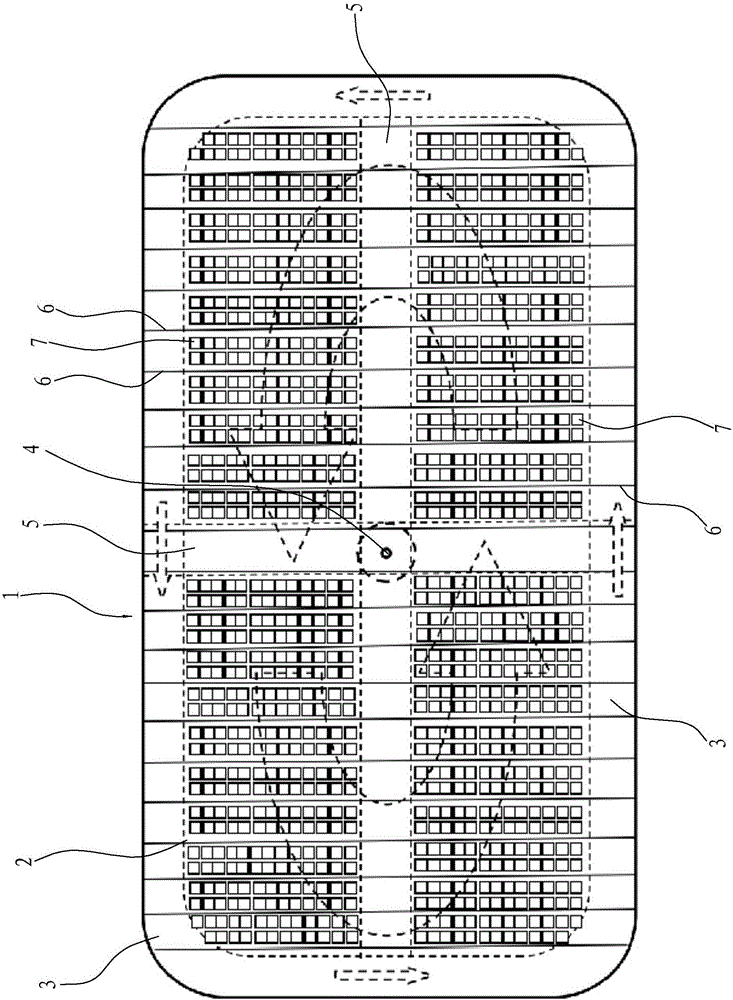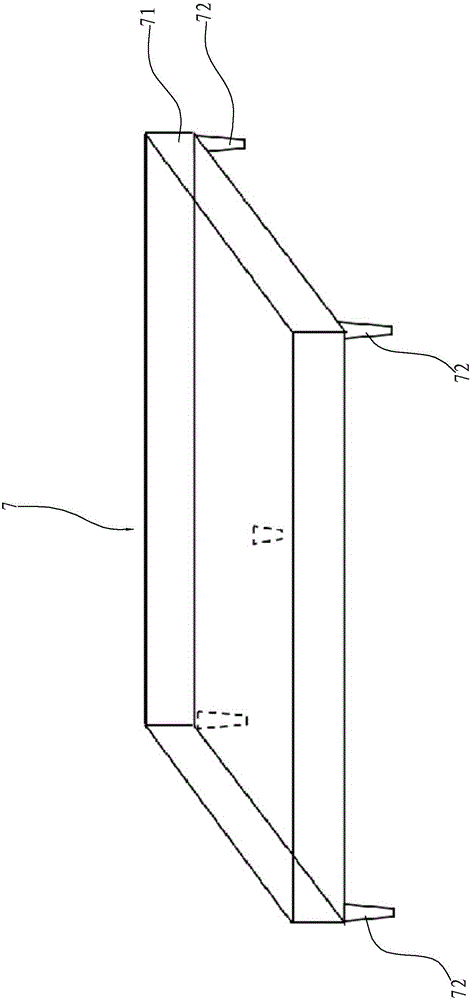High-level-pond for penaeus japonicus breeding and breeding method of penaeus japonicus
A high-level pond and shrimp technology, applied in fish farming, application, climate change adaptation, etc., can solve the problems of blackening and accumulation of pollutants in the sand layer, avoid a large amount of accumulation, prevent the blackening of the sand layer, and facilitate discharge. Effect
- Summary
- Abstract
- Description
- Claims
- Application Information
AI Technical Summary
Problems solved by technology
Method used
Image
Examples
Embodiment 1
[0027] Embodiment 1: Penaeus japonicus culture high level pond
[0028] like figure 1 Shown, a kind of penaeus japonicus culture high position pond, comprises pond body 1, and this pond body 1 is square (about 1.3 mus, and its length, width and depth are respectively 35m, 25m and 2.2m, and the slope of the pond wall is about 60°) , the bottom of the pool and its surroundings are covered by cement irrigation or plastic film. In this pool body 1, an activity area 2, a bait feeding area 3 and a waterwheel type aerator (not shown) are set. The bait feeding area 3 is ring-shaped, and its width is 1.5 ~2m, its width is 2m in this embodiment. Among them, the activity area 2 is set in the center of the pool body 1, the bait throwing area 3 is surrounded by the activity area 2 around the activity area 2, and there are two water wheel aerators arranged on the opposite side of the pool body 1. Corner, and the waterwheel type aerator used in the embodiment is the waterwheel type aerator...
Embodiment 2
[0034] Embodiment 2: Penaeus japonicus cultivation method
[0035] This culture method comprises the following steps: first in this high level pond, throw in Penaeus japonicus (purchased from the local prawn nursery in Zhoushan, the same below), the culture density of Penaeus japonicus is 5w / acre, according to the presence of Penaeus japonicus in the present embodiment The habit of feeding at night, so the feeding time is arranged at 18:30, 24:00 and 4:00.
[0036] 20 minutes before feeding, turn off the waterwheel type aerator to stop the water body from flowing, so as to prevent the water flow from bringing the feed into the sanding area after feeding. After feeding, it can be observed that a large number of Penaeus japonicus are concentrated in the feeding area for feeding by light irradiation; after the feeding is completed, most of the shrimp are attached to the slope protection around the pond. The channel excretes food quickly, so most of the feces will also be concent...
Embodiment 3
[0038] Embodiment 3: Penaeus japonicus cultivation method
[0039] This culture method comprises the following steps: first in this high position pond, puts Penaeus japonicus in, and the culture density of Penaeus japonicus is 7w / mu, in the present embodiment, according to the habit of asking for bait at night, Penaeus japonicus has, so feeding time is arranged in 18:00, 23:30 and 3:30.
[0040] 30 minutes before feeding, turn off the waterwheel type aerator to stop the water flow and prevent the water flow from bringing the feed into the sand area after feeding. After feeding, it can be observed that a large number of Penaeus japonicus are concentrated in the feeding area for feeding by light irradiation; after the feeding is completed, most of the shrimp are attached to the slope protection around the pond. The channel excretes food quickly, so most of the feces will also be concentrated in the feeding area. After 2 hours of baiting, the waterwheel aerator is turned on acc...
PUM
 Login to View More
Login to View More Abstract
Description
Claims
Application Information
 Login to View More
Login to View More - R&D
- Intellectual Property
- Life Sciences
- Materials
- Tech Scout
- Unparalleled Data Quality
- Higher Quality Content
- 60% Fewer Hallucinations
Browse by: Latest US Patents, China's latest patents, Technical Efficacy Thesaurus, Application Domain, Technology Topic, Popular Technical Reports.
© 2025 PatSnap. All rights reserved.Legal|Privacy policy|Modern Slavery Act Transparency Statement|Sitemap|About US| Contact US: help@patsnap.com


